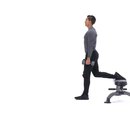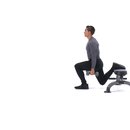Main Page | Get The PDF | Get Muscle | Get Strong | Get Ripped | Get Athletic
One of the ongoing discussions among lifters is whether their main goal is size or strength. That's not to say the two can't overlap: If you train for size, you get stronger, and if you train for strength, you get bigger. But your goal matters, because the way you train for each is very different.
According to strength trainer Nick Tumminello, size is about getting a pump and creating microscopic damage to the muscle, which then causes it to repair and grow larger. Strength is all about recruiting more of your muscles—more of your motor units—to accomplish a physical task. It's all about teaching your brain to send signals to your central nervous system (CNS) to engage muscles throughout your body.
One of the best ways to train your CNS to support your strength is by creating programs based on simple barbell exercises. Putting that program together—choosing the right exercises and performing them the right way—requires a lot of thought if you want to reach the apex of your strength.
Doing 5x5 for a year works might for a beginner. But if you're further along and want to increase your overall strength, you need a program that's more tuned to your individual strengths. Here are six guidelines and a program to help you reach advanced strength-building goals, or to insert a strength phase into a normal bodybuilding routine.
1. Choose the Optimal Combination of Movement, Weight, and Volume
There are three things to keep in mind when building strength:
- Strength training requires fewer exercises than size training, because you're increasing your training intensity.
- The exercises that build strength haven't changed; they're still primarily barbell lifts.
- Focus on barbell lifts, but choose variations that fit your body. Modify the range of motion of your exercises to maintain good joint position and full-body tension.
You train for strength at a higher intensity than you do for size, so you need to carefully match the most productive movements with the most appropriate volumes (sets x reps x weight). In this context, intensity is defined as the weight you're using divided by your single-rep max for that movement.
In general, when you're building strength, you work with heavier weights than you do with size-based (hypertrophy) programs. But you have to balance that additional weight with the right volume. If you program too much volume, it's hard to maintain the training intensity needed to build strength. Without enough volume, it's hard to reach your strength goals.
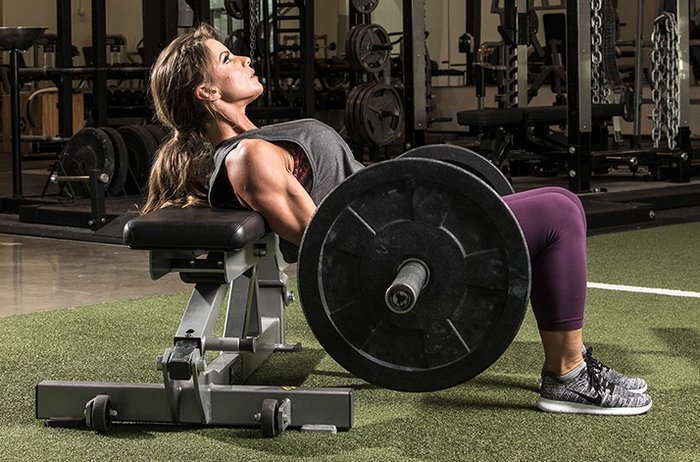
{{caption}}
You also have to choose the right movements—exercises that work well for your body and have the biggest CNS impact. And you have to place them in the right order throughout the training week.
Remember, increased strength is predominantly a neurological adaptation. Sure, bigger muscles offer more cross-sectional area to recruit from. But in reality, you don't have to get bigger to get stronger. Increasing your strength depends to a great extent on your ability to leverage your CNS to create full-body tension.
Generating full-body tension enables you to move a heavy load and sends a message to your entire nervous system, requiring it to generate output to overcome the task—and more demanding tasks in the future. You do that with simple barbell lifts, their partial-range variations, and other variations that account for slight changes in angles and type of equipment. One critical point: You have to carefully choose movements (or variations thereof) that fit your body.
The iron game is full of coaches who say you have to squat "ass to ankles" and deadlift from the floor to build strength. But your goal should be to use movements that put you in the best positions to move powerfully with properly aligned full-body tension.
It's all about working with your body; moving in ways that allow the spine to remain neutral (or close to it) and the peripheral joints to remain stacked at angles that promote intense and well-distributed muscular tension.
If you deadlift from the floor but can't keep your back straight and your ankles, knees, and hips in good alignment, work with your body by elevating the bar to a height from which you can do all of those things.
2. Create a Split: Program Strength up Front
I wish I could make it easy for you and just say, "Here's the best split to build strength." But there is no one way. I can, however, give you a principle-based split that works. It all starts with the neural-metabolic continuum.
This continuum is simple to understand: It just means placing the most neurologically demanding exercises and training days at the beginning of the week, and the most metabolic days at the end of the training week.
Since strength is your objective, you need to be fresh during the days with the highest neurological output. These are the days when you make the strongest push for adaptation. Training volume throughout the rest of the week helps foster the adaptation. But you start the strength storm up front.
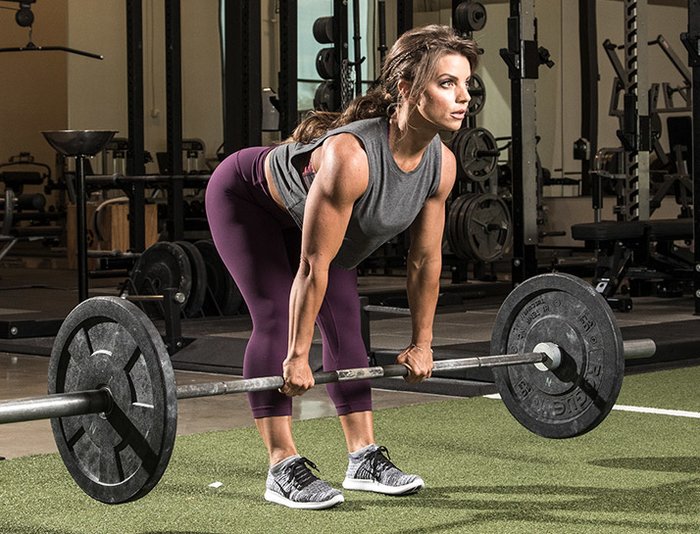
{{caption}}
By placing your strongest movements early in the week, you can train at a higher overall intensity. Why? Because your skill and predisposition to do a movement well allows you to work harder while doing it. Are you a good deadlifter? Then program your deadlift day first. If you're a good squatter, do squats first.
Establish your strength-building program as a three-day-a-week, full-body strength split with added neural-charge training days. Pair deadlifts with upper-body pushing movements. Pair squats with upper-body pulling movements.
The great thing about these movement combos is that they train noncompetitive muscle groups. They allow you to train at intensities that build strength, while still providing enough volume to drive adaptation.
3. Limit Volume, but Allow It to Change Over Time
Strength building doesn't require high training volume like bodybuilding does; 7-25 reps total (the sum of all the reps in all sets of a single exercise) on the main movements does the trick. When programming strength, I mainly live in the sweet spot of 10-20 total reps for main lifts. Assistance lifts follow suit but sometimes have higher volumes—as many as 30 total reps per exercise.
Over time, you should continually change the volume in your workout. Most beginners find that building training volume from week to week and month to month works best. But that approach tends to burn out intermediate and advanced lifters fast.
Intermediate and advanced lifters should "undulate" their volume, alternating training volumes from moderate to moderately high, to low, to high, and then back to moderately high again. Undulation-loading keeps you from fatiguing your body, allowing you to slowly adapt to your training.
4. Train at Higher, but not Maximum, Intensity
Intensity is defined as the weight you're using divided by your single-rep max for that movement. To build strength optimally, you must keep training intensity relatively high—without exerting maximum effort.

{{caption}}
To keep tabs on intensity, I like to use a simple RPE (rated perceived exertion) scale made popular by powerlifting coach Mike Tuchscherer. Rate your perceived exertion on the following scale of 1-10 (we won't bother with 1-5):
- 6.0: Bar speed is "snappy" with moderate effort, more than 5 reps left in the tank
- 7.0: Bar speed is "snappy" with maximum effort, 4-5 reps left in the tank
- 8.0: 2-3 reps left in the tank
- 9.0: 1 rep left in the tank
- 10.0: Absolute maximum effort, no reps left in the tank
For your strength-training split, do most of your sets in the 7.0-9.0 range. The lower the intensity, the higher the volume per set and per workout. (The opposite is true for higher intensities.)
Note: There are no 10.0-intensity workouts in the strength-building program below, so you won't be doing 1RM training (single-rep-max training tests your strength more than building it). You want to specifically avoid training to failure and make sure you could do at least one rep left if you had to.
5. Rest Between Pairs to Build CNS Output
For the most part, you can do the "Alternate Exercises" listed below a lot like you do supersets. But you will be taking a designated rest interval between each pair of exercises. By pairing two big, noncompetitive strength lifts, you're stressing the central nervous system, sending the message that it must get stronger without building too much muscular fatigue.
If you don't pair exercises this way, you increase muscular fatigue. Fatigue limits how hard you can work, which limits CNS output—which means you can't work hard enough to build absolute strength.
6. Alternate High- and Low-Intensity Days to Maintain Frequency
The more often you train and stimulate your nervous system, the faster you can build strength. But CNS training requires intelligent planning. The program I lay out below consists of five training days per week with an optional sixth day for additional neural charging.
Since you're potentially training six days per week, you have to be exceptionally mindful about how you design volume and intensity. You might plan three heavy strength days on Monday, Wednesday, and Friday, with Tuesday and Thursday serving as short, nontaxing neural-charge days and Saturday as your optional neural-charge session.
This setup creates the perfect ebb and flow that allows for constant stimulation of the nervous system while also promoting recovery. The volume and intensity undulates throughout the week so you can train with high frequency.
7. Time Your Rest Intervals to Optimize Neural Recovery
Exercises that tax your CNS require longer rest periods. It may feel like you're ready to go sooner rather than later after a heavy set—especially if you've been following a bodybuilding scheme. But that's just because your muscles recover faster than your nervous system.
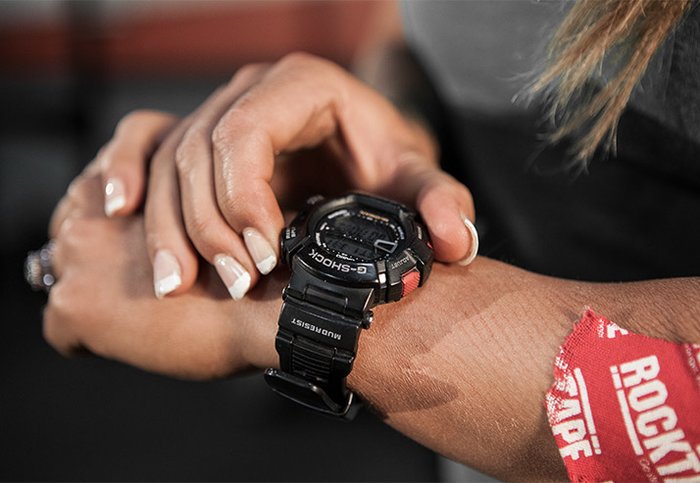
{{caption}}
Give yourself at least 2 minutes between heavy sets, and closer to 3 if you're working at a higher intensity.
8. Boost Recovery With Neural-Charge Days Between Heavy Workout Sessions
Neural-charge training is simple: It's a combination of power movements (not to be confused with strength movements) and high-tension core isometrics, done in a circuit with full recovery between sets. (Full recovery could be anything from 15-60 seconds. It just means you don't feel any residual fatigue from the last exercise.)
Neural-charge training offers just enough stimulation to keep the body adapting and recovering without getting overtaxed. Since this is neurologically based training, it fits well with the strength adaptations you're working for. And since it's done at low intensities and with full recovery between sets, it promotes recovery between heavy training days.
These sessions should take no more than 15-20 minutes, and at no point during the workout should you feel fatigue. You should leave the gym feeling good and alert. Just remember to keep practicing those other recovery staples: solid nutrition, plenty of sleep, and low stress.
Get Strong: The Starting Template
Before you get started, find your ideal working weight: If you're doing 3 reps of an exercise at Tuchscherer's RPE of 8.0, you're leaving 2-3 reps left in the tank. Don't fall into that temptation of thinking you need to increase weight so you can do only 5-6 reps.

{{caption}}
Stick with the RPE scale; it allows you to regulate training intensity from day to day depending on your energy level. Measuring intensity this way is more accurate for intermediate and advanced lifters and may vary from day to day.
The following represents a sample one-week training template built for an intermediate or advanced lifter. It includes a deadlift/bench-press day, a squat/row day, and a higher-volume assistance day. As I discussed above, if you're a great deadlifter, make deadlift day the first day of the week. If you're a better squatter, make that your first day. The higher-volume day is always the last strength day of the week.
Do your "Alternate Exercises" like supersets, but with rest in between. Complete the neural-charge sessions between the heavy strength days. And remember that this program doesn't include warm-up sets. Do as many warm-up sets as you need, but never take them to muscle failure.

BodyFit
$6.99/month- 2,500+ expert-created single workouts
- 3,500+ how-to exercise videos
- Detailed workout instruction
- Step-by-step workout tips
- Training at gym or at home
- Access to Workout Plans
- Access to Bodyfit App
- Store Discounts
Already have a Bodybuilding.com account with BodyFit? Sign In

What comes with BodyFit?

- Instructional Videos
Don't risk doing a workout improperly! Avoid injury and keep your form in check with in-depth instructional videos.

- How-to Images
View our enormous library of workout photos and see exactly how each exercise should be done before you give it a shot.

- Step-by-Step Instructions
Quickly read through our step-by-step directions to ensure you're doing each workout correctly the first time, every time.

BodyFit
$6.99/month- 2,500+ expert-created single workouts
- 3,500+ how-to exercise videos
- Detailed workout instruction
- Step-by-step workout tips
- Training at gym or at home
- Access to Workout Plans
- Access to Bodyfit App
- Store Discounts
Already have a Bodybuilding.com account with BodyFit? Sign In

What comes with BodyFit?

- Instructional Videos
Don't risk doing a workout improperly! Avoid injury and keep your form in check with in-depth instructional videos.

- How-to Images
View our enormous library of workout photos and see exactly how each exercise should be done before you give it a shot.

- Step-by-Step Instructions
Quickly read through our step-by-step directions to ensure you're doing each workout correctly the first time, every time.

BodyFit
$6.99/month- 2,500+ expert-created single workouts
- 3,500+ how-to exercise videos
- Detailed workout instruction
- Step-by-step workout tips
- Training at gym or at home
- Access to Workout Plans
- Access to Bodyfit App
- Store Discounts
Already have a Bodybuilding.com account with BodyFit? Sign In

What comes with BodyFit?

- Instructional Videos
Don't risk doing a workout improperly! Avoid injury and keep your form in check with in-depth instructional videos.

- How-to Images
View our enormous library of workout photos and see exactly how each exercise should be done before you give it a shot.

- Step-by-Step Instructions
Quickly read through our step-by-step directions to ensure you're doing each workout correctly the first time, every time.

BodyFit
$6.99/month- 2,500+ expert-created single workouts
- 3,500+ how-to exercise videos
- Detailed workout instruction
- Step-by-step workout tips
- Training at gym or at home
- Access to Workout Plans
- Access to Bodyfit App
- Store Discounts
Already have a Bodybuilding.com account with BodyFit? Sign In

What comes with BodyFit?

- Instructional Videos
Don't risk doing a workout improperly! Avoid injury and keep your form in check with in-depth instructional videos.

- How-to Images
View our enormous library of workout photos and see exactly how each exercise should be done before you give it a shot.

- Step-by-Step Instructions
Quickly read through our step-by-step directions to ensure you're doing each workout correctly the first time, every time.
Make Your Program Work Overtime
Advance your program through the month by changing volume and intensity in undulating fashion (not in a linear progression):
- Week 2: Keep volume and intensity the same.
- Week 3: Drop the volume and increases the intensity. (Heavier loads with fewer sets.)
- Week 4: Jump volume above the established moderate volumes of Weeks 1 and 2, with volume commensurately decreasing.
Once you've completed your first month, continue undulating volume and intensity from week to week over the next months. Either increase the overall intensity and reduce the volume (say, by dropping from 3 reps on the main movements down to sets of 1-2) or increase the overall volume (maybe by jumping from sets of 3 to sets of 4-5 reps).
Build Strength That Lasts
Strength is a simple pursuit, but one that requires an intelligent process. Intermediate and advanced lifters in particular need to plan and monitor their training variables to make consistent progress. Choose exercises wisely, pay attention to intensity, and undulate your training volume. Do all this while using solid recovery methods, and you'll gain strength for years to come.





